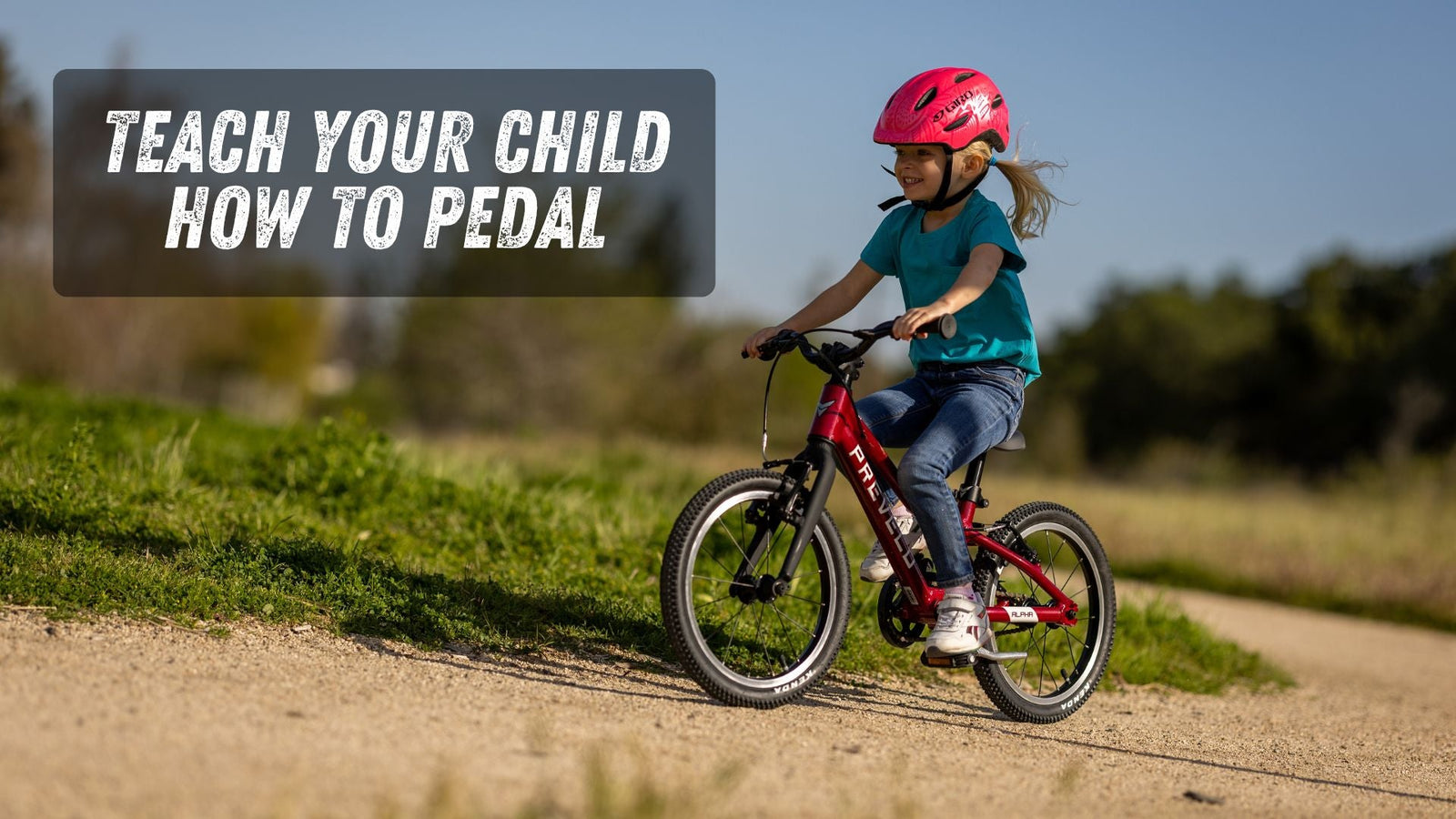Parent: "My 3 year old has mastered his balance bike. I feel he is ready to transition to a pedal bike. But when I put him on a pedal bike, he struggles with spinning the pedals. Do you have any advice to get my son pedaling?"
Struggling with learning to spin pedals is not uncommon, particularly for riders transitioning to pedal bikes younger than 4 years old. There are two common independent causes that could make it difficult for a young rider to spin pedals and it's helpful to try to identify the cause(s) so that you can offer the right kind of help.
Common causes:
- Issues related to understanding of how to spin pedals
- Issues related to coordination
Let's go through these one at a time.
Understanding How to Spin Pedals
Children need to understand some very basic things about how pedals work. They need to know (1) that when they spin pedals they are making the wheel turn (that is, that by spinning the pedals they will be propelling the bike forward) and (2) pedals need to spin forward to make the move.
A good exercise is to turn the bike upside down (or put it on a rack if you have one) and let your child spin the pedals and observe the back wheel spinning. This would also be an opportune time to make sure you child understands that when spinning, the chain, gears, cranks, wheels, and tires, are all danger zones for little fingers.
Coordination
Children need to be able to get their feet on the pedals and consistently pedal them forward. I see two common issues here:
1. Rider struggles to quickly get feet on the pedals
I generally teach first time riders to get moving by building momentum. First by running with their feet and then, once moving, finding the pedals and pedaling. This method requires that the rider be able to quickly get feet on the pedals. If the rider can't do this fast enough, the momentum will be lost and the rider will stall.
2. Rider struggles to consistently pedal forward
If the rider isn't pedaling at all, it could be that they don't fully understand that they need to pedal forward to spin the rear wheel. But another common issue is that the rider alternates between pedaling forward and backward. The former is typically an understanding issue (see above). The later is typically a coordination issue.
Some ways to address coordination issues:
- Practice Quickly Getting Feet on Pedals: For riders who struggle to quickly get feet on the pedals: Have the rider sit on the bike while you hold the bike upright. Now tell the rider that when you say "pedals", the rider has to get their feet on the pedals as quickly as possible. Do this a few times until the rider can quickly get their feet on the pedals.
- Practice Pedaling Forward Consistently: Try to find way to let your child practice pedaling without having to worry about anything else. If you have a bike trainer that will fit your child's bike, you can put the bike on the trainer and give the rider an opportunity to work on pedaling without worrying about balance. If you don't have a trainer, and if you have the strength, you can accomplish the same thing by letting your child sit on the bike and practice pedaling while you hold the rear wheel off of the ground. I usually do this by grabbing the bike by the saddle and lifting (just make sure your saddle clamp and seat post clamp are both very secure). The goal here is to let the rider experience pedaling so they aren't learning it while they are also trying to balance a bike.
- Examine Bike Setup: Many children will occasionally back pedal. As long as the child pedals forward enough to stay balanced, a little bit of back pedaling is OK. However, if a bike has a coaster brake (a brake activated by pedaling backwards) each time the child does this, the brake will activate. This can frustrate the learning experience. Consider a bike equipped with a freewheel, which will allow the rider to occasionally backpedal without being punished by a sudden and unwelcome loss of hard earned momentum (Read more on this subject here). Also, if the rider is consistently backpedaling when one foot approaches the top of the pedal stroke, it's possible that the seat is too low. A seat set too low will make it uncomfortable to spin through the top of a pedal stroke (it will force the rider's knee uncomfortably high). If you think this is an issue, you can experiment with slightly raising the seat. Be gentle when raising the seat on a first time rider - if a rider appears intimidated by the seat height, lower the seat.
What not to do
Some parents whose kids struggle with pedaling ask if they should put their kid on a bike with training wheels. The idea is that the training wheels will allow they child to focus on pedaling without worrying about balance. However, if a rider is exposed to training wheels, there is a risk that (1) it will be difficult to ween them off of training wheels and (2) they will develop techniques (like leaning to the outside of turns or putting feet on pedals on a bike that isn't moving) that will then need to be unlearned. Please, just say "no" to training wheels.

